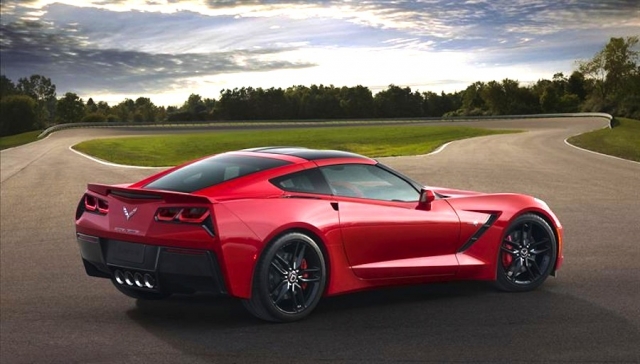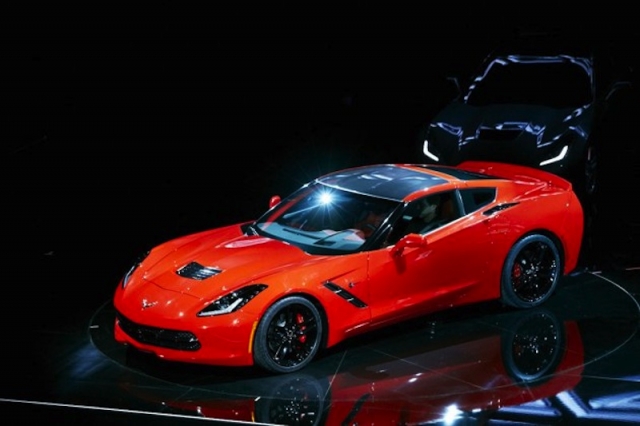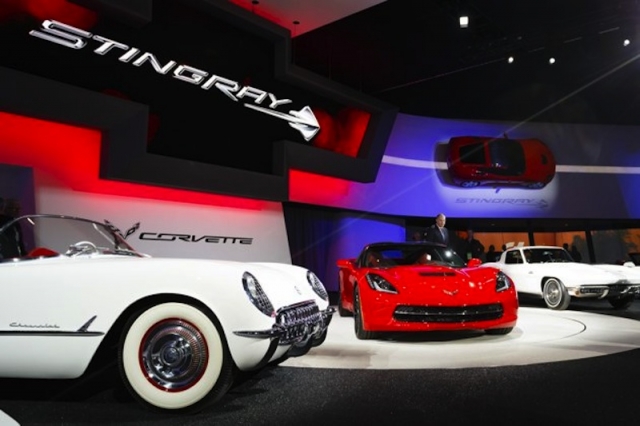 [1]If the Corvette fanbase has been waiting for GM to build an answer to the world’s supercar craze, than that fanbase’s search has clearly ended with the introduction of the latest development of the Vette marque, the C7 Stingray that’s sure to sweep Vette fans off their feet for the 2014 production year.
[1]If the Corvette fanbase has been waiting for GM to build an answer to the world’s supercar craze, than that fanbase’s search has clearly ended with the introduction of the latest development of the Vette marque, the C7 Stingray that’s sure to sweep Vette fans off their feet for the 2014 production year.
 [2]The C7 brings to the table one of the most radical changes in Corvette styling and architecture that we’ve seen in a long time. Any of you who have been following our coverage of the C7 over the course of this year already know darn well that this is GM’s finest flagship to date, but what you may not know is that the latest Vette also brings with it a host of performance and other technological cornerstones, those that should prove to make the Stingray for 2014 one of the General’s best historically.
[2]The C7 brings to the table one of the most radical changes in Corvette styling and architecture that we’ve seen in a long time. Any of you who have been following our coverage of the C7 over the course of this year already know darn well that this is GM’s finest flagship to date, but what you may not know is that the latest Vette also brings with it a host of performance and other technological cornerstones, those that should prove to make the Stingray for 2014 one of the General’s best historically.
After much effort quizzing the Corvette’s development team, Yahoo Autos’ [3] Josh Jacquot was able to pick seven different areas where GM has invested the most time and effort to make the C7 a supercar classic [4]. For two of GM’s most valuable team members, Alex MacDonald and Jim Mero, chassis and suspension development is one of the most paramount portions of the C7’s development.
The latest member of the Vette family, the C7 Stingray for 2014 features such high-tech goodies as Performance Traction Management, along with sensor-controlled ABS and an electronic differential.
One fascinating advance in vehicle dynamics control that’s being implemented with the new Stingray is in the use of the car’s tire pressure/temperature sensors to control the car’s ABS and electronic differential. The way that this essentially works is that the Vette’s electronics divide tire temperature into three categories: “cold,” “warm” and “hot.”
Putting it simply, the C7’s onboard sensors make the ABS and differential either more or less responsive/aggressive, depending on tire temperatures. Because this system doesn’t measure tire temperature directly, deducing it from the temperature of the TPMS microprocessor in each wheel, it’s one strategy that has not yet been perfected, but as Jacquot points out, the Stingray’s monitoring system is a vital piece of data collection technology. Jacquot also highlights new Michelin tire technology, active noise cancellation, and 24 hour durability testing in his look behind the scenes.
Indeed, the C7 has become a high-tech milestone for General Motors. The latest member of the Vette family has brought us a host of computerized goodies that are more than cool, but what should be the most interesting is to see just how such innovations as smart differentials and suspension components will inevitably change the very face of Corvette’s road and track legacy!
